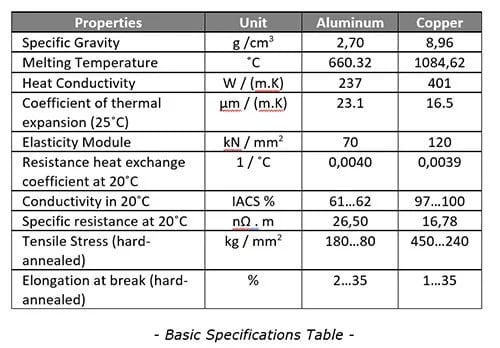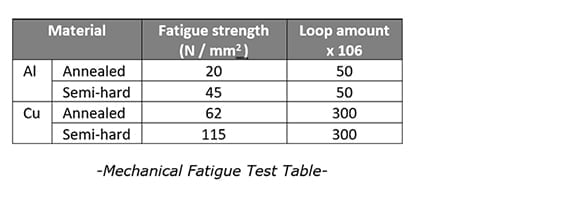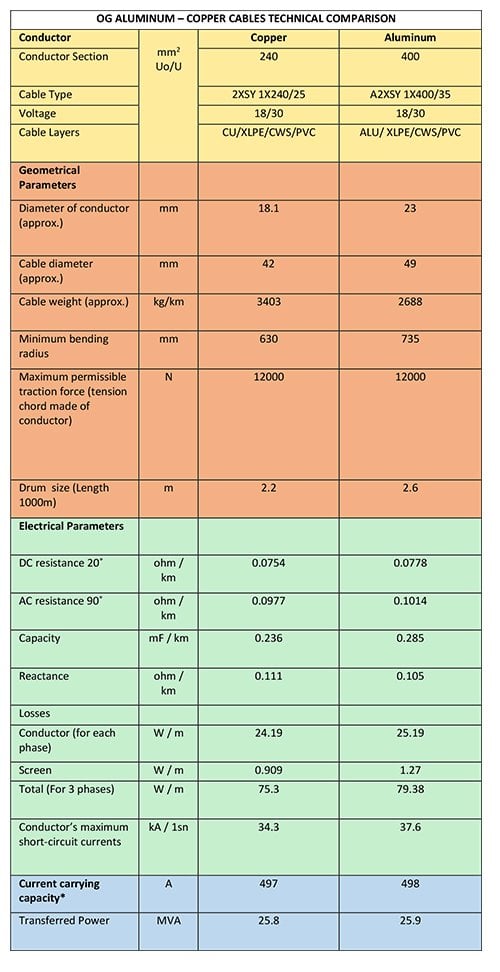Thanks to its high melting temperature, the copper element can withstand the mechanical forces that occur in thermo-active processes (expansion, contraction, etc.) without losing its mechanical properties.
One other important factor in the selection of conductive materials is the connections and joints. There are four main mechanisms affecting electrical connections. These are:
- Oxidation
- Galvanic effect
- Cold flow / Creep
- Thermal expansion
Oxidation: Oxide, which causes reduction in the metal-to-metal contact or increased contact resistance at the connection point, consists of sulfide or inorganic films. This effect may cause the contact surface to warm up and increase the temperature at the connection point, resulting in malfunction. In contrast to aluminum, copper joints rarely overheat and do not require any surface preparation or usage of antioxidant compounds.
Galvanic effect: When aluminum and copper come into contact with each other, aluminum can physically lose its structural property by electrolytic effect. The connection point is both mechanically and electrically deteriorated due to a reduction of the contact surface or corrosion. For this reason, an aluminum conductor used in conjunction with equipment and accessories such as contact seals, bimetallic termination or use of special equipment needs implementation of a series of insertion techniques.
Cold flow / Creep: Pressure is applied to create a good connection structure and to ensure high contact of the conductors. This operation may cause the metal to “flow”, therefore to deform. While this effect is mostly seen in aluminum conductors, the effect for a copper conductor, which is more rigid, is so less that it is not significant. When the conductor is under stress, the deformation of metal depending on the level, duration and temperature of the stress, is called “creep”. Both cold flow and creep lead to decreased contact pressure, increased joint resistance, and thus, overheating. Aluminum creeps more than copper, faster and at lower temperatures.
Thermal expansion: While no relaxation is observed at the connection points made with copper-copper, brass-copper or cable lugs which thermal expansion of aluminum conductors can cause loosening over time. Increased contact resistance increases the overheating and arc potential, thus increasing the risk of fire. Joint connections with copper are stronger, more resistant to corrosion, more reliable and durable (because they are less sensitive to cold flow and thermal effects) than aluminum joint connections.
Installation Structure and Cost
Whether the cables are aluminum or copper, they are subjected to successive bending or pulling forces at turning points during installation. These bends cause the conductor to be physically forced/strained. To cope with this, the conductor must have a flexible structure. The cables which are prepared according to the international TS EN 60228 production standard are divided into four classes.
- Class 1: Solid conductors
- Class 2: Stranded conductors
- Class 5: Flexible conductors
- Class 6: Conductors with flexibility more than Class 5.
While the use of both aluminum and copper materials is permitted for the production of Class 1 and Class 2 conductors, for the production of conductors of class 5 and 6, only the usage of copper is allowed. The reason for this is that the copper is flexible. The same standard allows production only in sections of 10 mm² and above as minimum dimension in order to provide sufficient strength in aluminum conductors.
The permitted bending radius in the TS EN 60228 and TS EN 50565-1 standards may vary from 2 times to 15 times the cable diameter. However, for cables with the same current carrying capacity, it would be inevitable to install it with a larger bending angle as the aluminum cable would have a larger cross section.
When we look at energy savings and CO2 emissions, among the metals that transmit the electricity and heat best, copper stands out. The low resistance of copper plays a significant role in improving the energy performance of the devices and units in which it is used, and contributes to the reduction of CO2 gas emissions produced by saving energy.
Considering the cost of installation, operation and maintenance, the investment cost of aluminum is more favorable than copper, but when the cost of maintenance of these metals, installation equipment, manufacturing costs and installation labor are included in the total cost, the cost advantage of aluminum is almost eliminated.
Aluminum and Copper cables comparison sample








